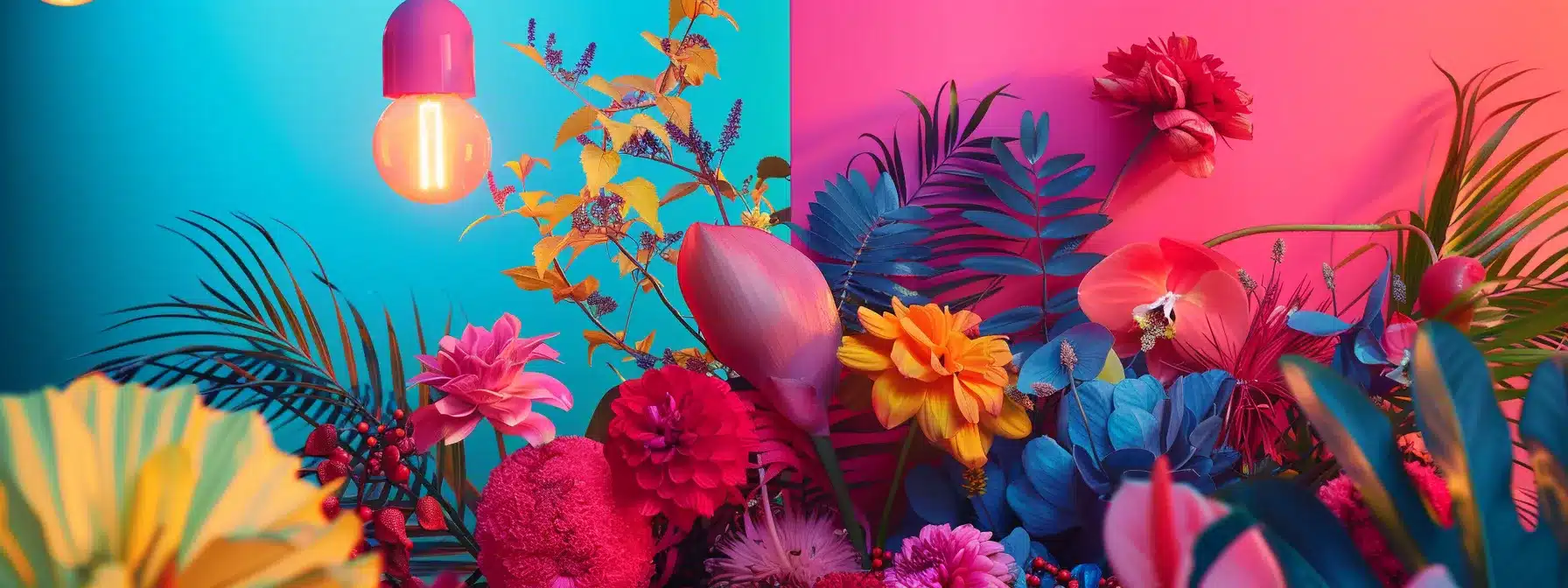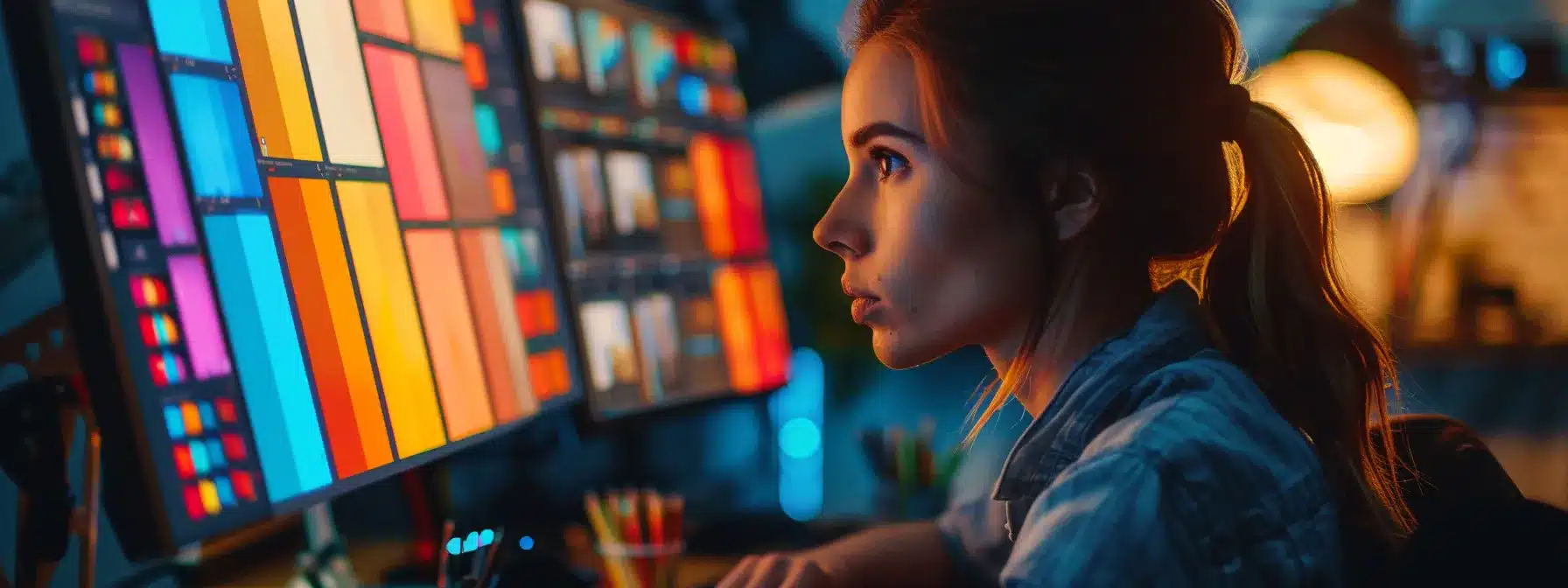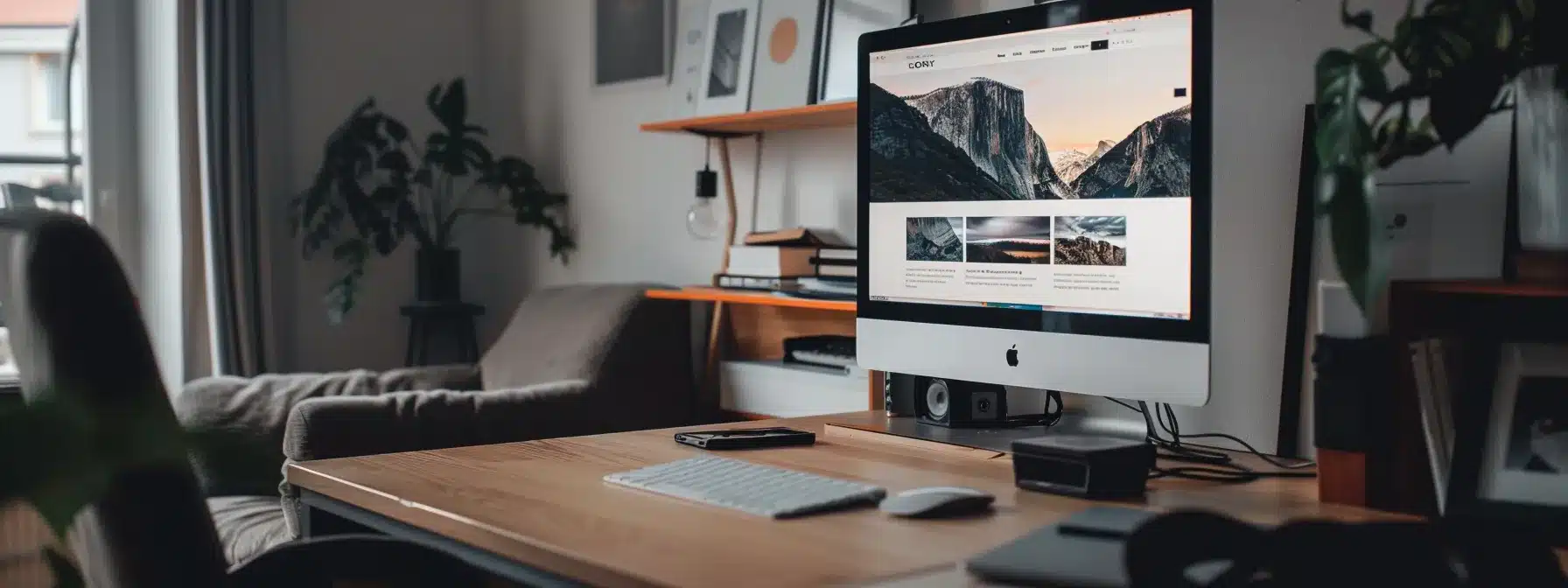What if the right hue could significantly enhance your website’s user experience? Understanding how colour impacts atmosphere can transform the way visitors interact with your site. This post will explore the psychology of colour in web design, techniques for selecting effective colour palettes, and strategies to improve navigation and usability. By addressing challenges like colour blindness and offering insights based on analytics, you’ll learn how to create a more engaging online presence. Equip yourself with knowledge that supports better search engine optimisation and creates a welcoming environment for all users.
Key Takeaways
- Colour choices can significantly influence user emotions and behaviour on your website
- Adapting colour palettes for cultural context enhances user experience and engagement
- Effective contrast improves readability and guides usernavigation through your site
- Personalising colour schemes can increase user satisfaction and retention rates
- Dynamic colour interactions create a more engaging and interactive browsing experience
Understanding the Psychology of Color in Web Design

Colours play a significant role in evoking emotional responses, affecting your audience’s preference and attention. Cultural influences shape how colours are perceived, impacting customer experience differently across demographics. Moreover, the right colour choices in graphic design can guide user decision-making, enhancing sophistication and leading to improved interactions on your website.
How Colors Evoke Emotional Responses
Understanding how different colours interact with your audience’s colour vision is vital for creating a successful web design strategy. Colours can evoke specific emotional responses that influence user behaviour and preferences. For example, warm colours like red and yellow often create feelings of excitement and urgency, while cooler tones like blue and green tend to evoke calmness and trust. By harnessing these emotional triggers, you can tailor your design to resonate with users, ultimately enhancing their overall experience.
It’s essential to consider factors like gender and inclusivity when choosing your colour palette to ensure that your design appeals to a broad demographic. For example, research suggests that women may respond more positively to soft tones, while men might prefer bold, contrasting colours.
Implementing inclusive design principles by providing sufficient contrast can help all users navigate your website effectively. By paying attention to these details, you create a user-friendly environment that fosters positive emotional connections with your brand.
Cultural Influences on Colour Perception
Cultural context significantly influences how you perceive and use colour in web design. For instance, while white is often associated with purity and simplicity in Western cultures, it represents mourning and loss in some Eastern cultures. Understanding these nuances can enhance your design’s effectiveness by ensuring that your colour choices resonate with the targeted audience. By employing strategies like flat design principles and visual hierarchy, you can effectively guide users through your website while respecting cultural colour associations.
When planning your web design, consider conducting usability testing to see how users from various backgrounds react to your colour scheme.
Small adjustments based on cultural interpretations can have a profound impact on the overall user experience, especially in navigation. By prioritising inclusivity and cultural awareness in your designs, you enhance usability, making your website more inviting and accessible to a broader audience.
The Impact of Color on User Decision-Making
The impact of color on user decision-making is profound and closely tied to principles of color psychology. When you select primary colors that invoke feelings of tranquillity, users are more likely to engage positively with your website. For instance, using soft blue tones can create a sense of calmness, encouraging visitors to linger longer on your pages, which enhances memory retention of your brand and its offerings.
Effective information architecture combined with appropriate colour choices can significantly influence how users navigate your website. By strategically implementing colours highlighting important information or calls to action, you guide users seamlessly toward desired outcomes. This not only supports decision-making but also creates an inviting atmosphere that fosters trust and satisfaction, essential factors in retaining customers in a competitive market.
Now that you grasp how colours shape feelings, it’s time to choose a palette. Selecting the right colours can guide users and create a better experience on your site.
Selecting a Colour Palette That Enhances User Experience

When selecting a colour palette for your web design, it’s essential to align colours with your brandidentity. This alignment ensures your user interface reflects the essence of your brand. Creating visual harmony and balance among colours can enhance user experience by reducing complexity.
Ensuring accessibility through proper contrast is vital; user research indicates that contrasting colours improve usability for all consumers.
By focusing on these aspects, you create a more engaging experience for users, encouraging them to interact with your site. Each topic will provide practical insights to help you choose an effective colour palette that enhances user satisfaction.
Aligning Colours With BrandIdentity
Ensuring your colour palette aligns with your brandidentity is vital for a cohesive marketing strategy. Selecting colours that reflect your brand‘s values and message helps establish a strong visual presence, improving customer satisfaction. For instance, a technology company might opt for innovative shades of blue and grey that convey trust and modernity, making it easier for your audience to connect with your offerings.
It’s also crucial to maintain a suitable contrast ratio between your background and text colours to enhance readability.
By focusing on harmonising your colours with your brandidentity, you create an inviting user experience that encourages interaction. This not only fosters trust but also supports the overall effectiveness of your web design, enhancing the perception of your brand in the minds of your customers.
Creating Visual Harmony and Balance
Creating visual harmony and balance within your colour scheme is essential for enhancing user experience on your website. A well-curated palette not only ensures beauty but also significantly impacts legibility and perception.
When colours are balanced effectively, they can evoke the right energy, making your site visually appealing while simultaneously guiding users through the content effortlessly.
To achieve visual harmony, you should select colours that complement each other and support readability. Consider using tools such as Adobe Color or Coolors, which can assist in developing a cohesive palette that adheres to principles of contrast and unity. By focusing on these aspects, you create an inviting atmosphere that entices users to interact with your content, ultimately improving their overall experience on your website:
| Element | Importance | Example |
|---|---|---|
| Contrast | Enhances legibility | Dark text on a light background |
| Complementary colours | Creates visual harmony | Blue and orange accents |
| Consistent theme | Strengthens brand identity | Shades of green for an eco-friendly site |
Ensuring Accessibility Through Contrast
To ensure accessibility through contrast in your web design, it is essential to consider how different color choices impact your audience’s perception and interaction. High contrast between text and background colours not only enhances readability but also guides users toward important elements, such as your call to action buttons. By applying principles from color theory, you can create a visually appealing landscape that reflects your brand‘s personality while accommodating users with different visual needs.
Implementing adequate contrast can significantly improve user experience by allowing all visitors to engage with your website easily. A well-thought-out colour concept not only creates visual interest but also increases the likelihood of conversion. For example, if your primary colour scheme includes soft tones, pairing it with darker accents can draw attention to critical features.
This strategic approach ensures that your website remains welcoming and accessible to everyone, enhancing overall satisfaction and loyalty to your brand. The right colours do more than please the eye; they guide the user’s journey. Read more in our dedicated post to using colours with accessibility in mind.
Using Colour to Improve Navigation and Usability

Highlighting call-to-action buttons with strategic colour choices increases user engagement and drives conversion rate optimisation. By using colour-coded elements, you can guide users through your site effectively.
Selecting appropriate background and text colours enhances readability, ensuring typography supports your brand‘s message and aligns with customers’ appetite for clarity and ease of use.
Highlighting Call-to-Action Buttons
Highlighting call-to-action (CTA) buttons is fundamental for enhancing user experience in web design. Experimenting with colours that evoke optimism can draw users’ attention to these important elements, particularly when you choose shades that stand out against a grey background. This strategic use of colour not only guides user behaviour effectively but also aligns with the web content accessibility guidelines, ensuring that all users can understand and engage without confusion.
When designing a mobile app or website, integrating vibrant colours for your CTAs can significantly improve navigation.
Consider using strong contrasts to help users identify where to click, as this clarity reduces frustration and increases interaction rates. By implementing this practical approach, you can create a more inviting digital environment that enhances usability and promotes positive user experiences.
| Design Element | Recommended Colour | Purpose |
|---|---|---|
| Call-to-Action Button | Bright Yellow | Draw user attention |
| Background | Light Grey | Create contrast |
| Text | Dark Blue | Enhance readability |
Guiding Users With Colour-Coded Elements
Using colour-coded elements is a powerful method to guide customers through your website, enhancing both navigation and usability. By applying shades of blue to indicate calmness and relaxation, you can create an inviting environment that helps users feel at ease while interacting with your content. Incorporating empathy into your design strategy allows you to anticipate customer needs, ensuring that their journey across your site is not only intuitive but also enjoyable.
Consider implementing distinct colour codes for various categories or functions on your site, aligning them with cultural perceptions. For example, using warm colours for urgent alerts while opting for relaxing blue tones for informational sections can effectively direct userattention. This method clarifies the purpose of each element, catering to diverse customer backgrounds and cultures while enhancing their overall experience.
| Element | Colour Code | Purpose |
|---|---|---|
| Urgent Alerts | Red | Draw immediate attention |
| Informational Sections | Shades of Blue | Create a sense of relaxation |
| Call to Action | Bright Yellow | Encourage user interaction |
Enhancing Readability With Background and Text Colours
Enhancing readability through effective background and text colours is essential for creating a website that resonates with your target market. Using contrasting colour schemes can significantly improve visual perception, ensuring that users can easily read your content without straining their eyes. For example, pairing dark text with a light background fosters brand awareness, as clear communication builds confidence in your offerings and encourages users to explore further.
Selecting the right colours not only aids in readability but also impacts user engagement and retention. When your colour scheme promotes clarity, visitors are more likely to connect with your brand and navigate your site without frustration.
This direct approach to visual design not only enhances usability but also strengthens the overall user experience, paving the way for increased conversions and customer loyalty.
Case Studies of Effective Colour Usage in Web Design

This section will analyse successful colour schemes from leading websites, highlighting how effective colour choices can prevent userfatigue and enhance accessibility.
You’ll learn from notable colour redesigns that demonstrate the emotional impact of colours and their specific wavelengths. Finally, we will explore the role of colour in conversion rate optimisation, showing its crucial influence on user decision-making.
Analyzing Successful Colour Schemes From Leading Websites
Successful colour schemes from leading websites demonstrate how thoughtful colour choices can significantly influence userbehaviour and engagement.
For example, an organisation that employs a wealth of visual consistency tends to create a seamless experience that retains users’ attention and encourages interaction. By studying the methodology behind these design choices, you can derive insights on how to align your own site’s colour palette to enhance navigation and improve overall user satisfaction.
Incorporating effective colour strategies can also aid your website in achieving better visibility on search engines. When visitors feel comfortable and engaged thanks to a well-designed colour scheme, they are more likely to explore your content further. This not only increases the likelihood of conversion but also enhances brandperception, positioning your organisation favourably in a competitive market.
Lessons Learned From Colour Redesigns
Redesigning colour schemes provides valuable insights into how different hues can enhance user experience. Many businesses have found that by shifting to a more harmonious palette, they not only improve the aesthetic appeal of their website but also help convey their brand‘s story more effectively. For instance, a retail website that transitioned from bold, distracting colours to soft, complementary shades reported increased user engagement and satisfaction, demonstrating the importance of taste in colour selection.
Understanding the impact of colour choices in storytelling can greatly influence userperception. An effective colour redesign should create an ambience that resonates with your audience, reflecting the emotions you wish to evoke.
By analysing successful case studies, you can implement strategies that personalise the user journey, thus encouraging deeper connections and driving conversions through thoughtful colour usage.
| Website | Original Colours | Redesigned Colours | Impact on User Experience |
|---|---|---|---|
| Retail Brand A | Bold and Distracting | Soft and Complementary | Increased Engagement and Satisfaction |
| Service Provider B | Dark and Heavy | Bright and Inviting | Enhanced Clarity and User Retention |
| Tech Company C | Muted and Confusing | Clear and Modern | Improved Branding and Trust |
The Role of Colour in Conversion Rate Optimisation
Colour plays a pivotal role in conversion rate optimisation within your website’s interface. Understanding how different hues can influence mood allows you to create an environment that encourages users to interact with your content. For example, warm tones can stimulate a sense of urgency, prompting quicker decision-making, essential for driving conversions and improving the overall user experience.
Implementing thoughtful creativity in your colour choices not only enhances interaction design but also reflects your knowledge of user behaviour. Using colours strategically in call-to-action buttons, for example, can guide users more effectively towards desired outcomes.
This approach can significantly boost engagement and increase the likelihood of conversions, as users feel more connected and motivated to take action when colours resonate with their needs and emotions.
Effective colour usage can change how a user feels and acts on a website. Next, let’s look at the tools and techniques that help you bring these colours to life in your own designs.
Tools and Techniques for Implementing Colour in Web Design

In user experience design, understandingcolour theory and using colour wheels is essential for creating effective web designs that reflect your brandidentity. This subsection will cover how to test colour combinations through user feedback to ensure an optimal experience. Additionally, adapting your colours for different devices and screens supports a minimalist approach, enhancing visual hierarchy while delivering a calm and engaging user experience.
Utilising Colour Theory and Colour Wheels
Utilising colour theory and colour wheels in web development can significantly enhance the user experience by helping you select harmonious palettes. By understandingprimary colours and their relationships, you can create visually appealing designs that resonate with your target audience.
For instance, selecting complementary colours can guide users’ attention towards essential elements like calls to action while ensuring readability and aesthetic balance.
Incorporating an awareness of sustainability within your design choices can also reflect positively on your brand. By opting for eco-friendly colors, you signal your commitment to social responsibility, which can strengthen connections with your audience. As you navigate your design process, remember that the right colour combinations not only improve usability but also contribute to an overall positive perception of your brand in a competitive digital landscape.
Testing Colour Combinations With User Feedback
When testing colour combinations for your landing page, integrating design thinking can lead to valuable insights. By gathering user feedback, you can determine how specific colour choices, like your primary and secondary colours, influence the feelings of users when they interact with your site.
For instance, you might discover that a particular shade for your button prompts a more favourable emotional response, ultimately affecting conversion rates.
User testing not only allows you to refine your website’s colour scheme but also helps ensure it aligns with your audience’s preferences. Conducting A/B tests with different button colours can reveal which combinations yield the best engagement and enhance the overall user experience. Make iterative changes based on this feedback to create a site that feels tailored to your visitors’ needs:
| Test Element | Colour Combination | User Feedback |
|---|---|---|
| CTA Button | Bright Green | Increased enthusiasm and engagement |
| Background | Soft Blue | Promoted calmness and focus |
| Secondary Button | Warm Orange | Fostered urgency and action |
Adapting Colours for Different Devices and Screens
Adapting colours for different devices and screens is essential for enhancing usability when designing your website. Different screens display colours variably due to factors like screen resolution and brightness settings.
To ensure that your brandidentity remains consistent, consider designing a user interface that incorporates complementary colours that look appealing on various devices. This approach helps maintain visual harmony and ensures a pleasant user experience.
To achieve effective colour adaptation, it is beneficial to test your colour palette on different devices as part of your web design process. By reviewing how colours appear on mobile devices, tablets, and desktop monitors, you can make necessary adjustments that enhance overall usability. This proactive strategy not only optimises your user interface design but also reinforces your brand‘s visual identity across platforms, paving the way for stronger user connections.
| Device Type | Color Considerations | Example Adjustments |
|---|---|---|
| Mobile | Higher brightness; smaller screens | Brighter complementary colors for visibility |
| Tablet | Medium brightness; touch interaction | Medium contrast colors for ease of use |
| Desktop | Variable brightness; larger screens | Subtle color contrasts for readability |
As you master the tools for using colour, the future beckons with new ideas. The way we experience colour online is changing, and you’ll want to be ready for what lies ahead.
Future Trends in Colour and User Experience

As you explore the future trends in colour and user experience, you’ll notice the rise of minimalist colour schemes, which focus on simplicity and elegance.
Additionally, incorporating dynamic and interactive colours will enhance engagement, allowing users to connect more deeply with your site. Personalising user experience with adaptive colouring will further tailor interactions, ensuring that your design meets the unique needs of each visitor.
The Rise of Minimalist Colour Schemes
The rise of minimalist colour schemes in web design reflects a growing preference for simplicity and functionality. By focusing on fewer colours, you can create a clean and uncluttered user interface that enhances readability and improves user experience. For example, a website using a limited colour palette with soft neutrals and one accent colour can effectively draw attention to key elements, such as call-to-action buttons, making it easier for users to navigate your site.
As you implement minimalist colour schemes, it’s important to consider the balance between aesthetics and usability. A simplified palette not only reduces visual noise but also helps communicate your brand‘s identity more clearly.
When users can focus on essential elements without being overwhelmed by excessive colour variations, they are more likely to engage with your content and complete desired actions on your site:
| Key Aspect | Minimalist Colour Scheme Impact |
|---|---|
| Clarity | Enhances information readability |
| Focus | Directs user attention to key actions |
| Brand Identity | Strengthens visual messaging |
Incorporating Dynamic and Interactive Colours
Incorporating dynamic and interactive colours into your web design can elevate user experience significantly. By using colours that change based on user interactions, such as hover effects or transitions, you create a more engaging environment that captures attention.
If a button, for example, changes from a cooler tone to a warmer shade when hovered over, it not only visually signifies interactivity but also encourages users to take action.
This approach allows you to convey vital information dynamically while enhancing the overall usability of your website. Users benefit from clear visual cues that guide their next steps, leading to improved navigation and satisfaction. Consider implementing these interactive colour features in your design strategy to keep your audience engaged and motivated to explore further:
- Utilise hover effects that change colours to indicate clickable elements.
- Implement colour transitions that respond to user interactions, such as scrolling or clicking.
- Choose a colour palette that reflects your brand while enabling dynamic interactions smoothly.
Personalising User Experience With Adaptive Coloring
Personalising user experience using adaptive colouring is an effective strategy to cater to individual preferences and behaviours. By implementing colour schemes that adjust based on user interactions or demographics, you create a more engaging and meaningful experience. For example, if a user frequently visits your site and engages with certain content, adapting the colour palette to highlight this content can enhance their connection with your brand.
This approach not only improves user satisfaction but also boosts retention rates by making the browsing experience feel more tailored. As users interact with your website, consider using tools that allow for real-time colour adjustments in response to their behaviour or preferences. This will ensure that your web design remains relevant and engaging, addressing the unique needs of each visitor:
- Use colour changes based on user activity to highlight frequently visited sections.
- Incorporate seasonal colour shifts to keep the site fresh and engaging.
- Employ A/B testing to determine which colour adaptations resonate most with your audience.
Conclusion
Exploring the impact of colour on user experience in web design is vital for creating an inviting and effective online presence. Thoughtful colour choices can evoke emotional responses, enhance navigation, and improve accessibility, ultimately guiding users towards desired actions. By aligning your colour palette with your brandidentity and considering cultural nuances, you foster stronger connections with your audience. Emphasising the significance of colour not only enhances usability but also drives customer satisfaction and loyalty, making it a critical element in successful web design.

